Aleph Proximity Sensor Application Notes
Handling
- Tightening torque on M3 screws used for mounting sensors is 5kg cm2 max. Avoid using tools such as pneumatic screwdrivers, which apply shock and vibration to sensors.
- Mounting surface should be flat and free of debris. Mounting on uneven surfaces will result in stress forces being applied to sensors. This may result in damage to internal reed switch.
- If sensor is dropped from height of 30 cm or more onto a hard surface, its operating characteristics are likely to change (deteriorate). Care should be used during handling.
Magnetic Interference
- Presence of machinery, such as motors and solenoids, in close proximity to sensor, may cause a change of its characteristics and result in erroneous operation. Placing sensor away from such magnetic field generating devices, or use of magnetic shielding, may be necessary.
- Presence of magnetic materials (iron plate, etc.) in close proximity to sensor, may cause a change of its operating characteristics. Operation of sensor needs to be verified.
Contact Protection
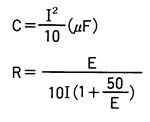 Inductive
loads:
Inductive
loads:
When using reed switch based proximity sensors for switching inductive loads, such as motors, relay coils, solenoids, etc., contacts will be subjected to high induced voltages during opening of sensor contacts. Such high induced voltages (transients) may cause damage to sensor contacts and significantly reduce its operational life. Therefore, protective circuits, such as : RC (snubber), varistors, or clamping diodes, are recommended.
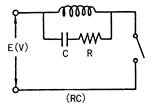 |
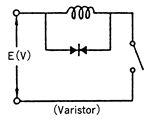 |
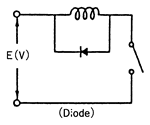 |
- Capacitive loads:
When using reed switch based proximity sensors for switching capacitive loads, such as capacitors, incandescent lamps or long cables (harnesses), contacts will be subjected to high surge (inrush) current. Therefore protective circuits such as : surge suppressors or current limiting resistors, are recommended.
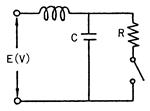 |
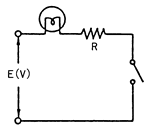 |
Notes on Lever Actuated Sensors
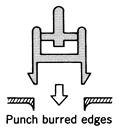 Mounting
Mounting
- There are two types of lever actuated sensors : spring loaded and counterweight. Spring loaded lever sensor can be mounted in any position, but counterweight lever sensor must be mounted in position as shown on individual drawings.
- Lever actuated sensors are designed to be mounted on sheet metal. If mounted on printed circuit board or plastic, proper attachment to such materials must be provided to avoid mechanical shift. When more adhesion is needed, glue may be used.
- Mounting hole size and shape of snap action mounting type; see recommended mounting hole dimensions for each model.
- If mounting hole has punch burred edges, insert sensor from the other side. Reversed insertion may cause mechanical damage to sensor.
- Mechanical
- Proper operating angle is important to achieve stable operation; see specification sheets.
- When used for high speed sensing, make sure that actuator has enough time to return to free position.
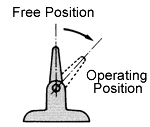 When
using spring loaded lever actuators, make sure that spring
pressure on actuator will allow for proper movement of sensed
object. Keep in mind that actuator will wear through repeated
mechanical contact with sensed object.
When
using spring loaded lever actuators, make sure that spring
pressure on actuator will allow for proper movement of sensed
object. Keep in mind that actuator will wear through repeated
mechanical contact with sensed object.
Please contact ALEPH, if your application requirements cannot be met by any of our standard models, due to any of the reasons listed below:
- wire style (color, UL grade, gauge, length)
- connector style
- package style
- high speed or extremely low speed
- long operational life
- lever style
- mounting plate thickness, etc.